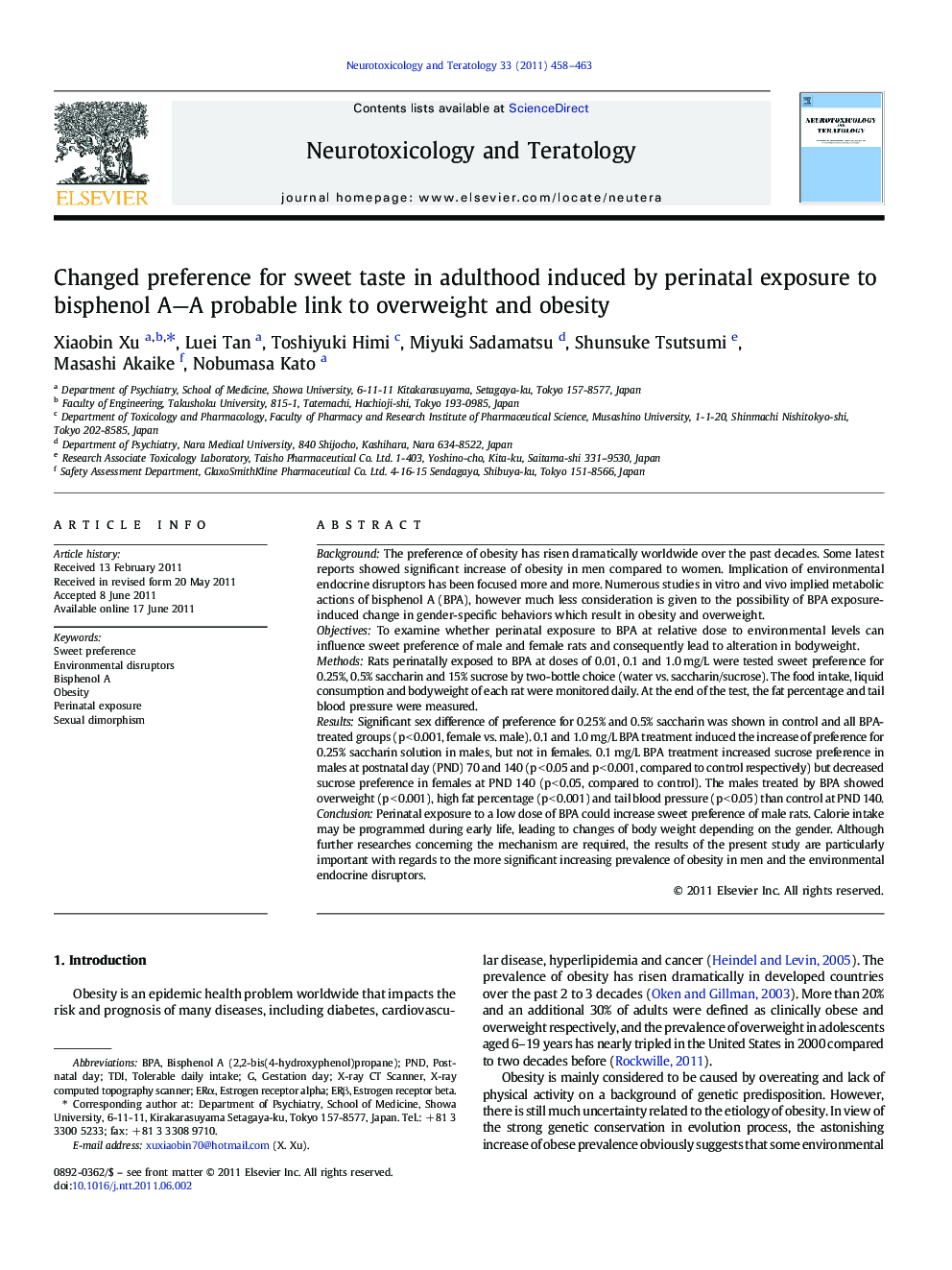| کد مقاله | کد نشریه | سال انتشار | مقاله انگلیسی | نسخه تمام متن |
|---|---|---|---|---|
| 2591333 | 1131807 | 2011 | 6 صفحه PDF | دانلود رایگان |

BackgroundThe preference of obesity has risen dramatically worldwide over the past decades. Some latest reports showed significant increase of obesity in men compared to women. Implication of environmental endocrine disruptors has been focused more and more. Numerous studies in vitro and vivo implied metabolic actions of bisphenol A (BPA), however much less consideration is given to the possibility of BPA exposure-induced change in gender-specific behaviors which result in obesity and overweight.ObjectivesTo examine whether perinatal exposure to BPA at relative dose to environmental levels can influence sweet preference of male and female rats and consequently lead to alteration in bodyweight.MethodsRats perinatally exposed to BPA at doses of 0.01, 0.1 and 1.0 mg/L were tested sweet preference for 0.25%, 0.5% saccharin and 15% sucrose by two-bottle choice (water vs. saccharin/sucrose). The food intake, liquid consumption and bodyweight of each rat were monitored daily. At the end of the test, the fat percentage and tail blood pressure were measured.ResultsSignificant sex difference of preference for 0.25% and 0.5% saccharin was shown in control and all BPA-treated groups (p < 0.001, female vs. male). 0.1 and 1.0 mg/L BPA treatment induced the increase of preference for 0.25% saccharin solution in males, but not in females. 0.1 mg/L BPA treatment increased sucrose preference in males at postnatal day (PND) 70 and 140 (p < 0.05 and p < 0.001, compared to control respectively) but decreased sucrose preference in females at PND 140 (p < 0.05, compared to control). The males treated by BPA showed overweight (p < 0.001), high fat percentage (p < 0.001) and tail blood pressure (p < 0.05) than control at PND 140.ConclusionPerinatal exposure to a low dose of BPA could increase sweet preference of male rats. Calorie intake may be programmed during early life, leading to changes of body weight depending on the gender. Although further researches concerning the mechanism are required, the results of the present study are particularly important with regards to the more significant increasing prevalence of obesity in men and the environmental endocrine disruptors.
► Sweet preference induced by perinatal BPA exposure and overweight
Journal: Neurotoxicology and Teratology - Volume 33, Issue 4, July–August 2011, Pages 458–463